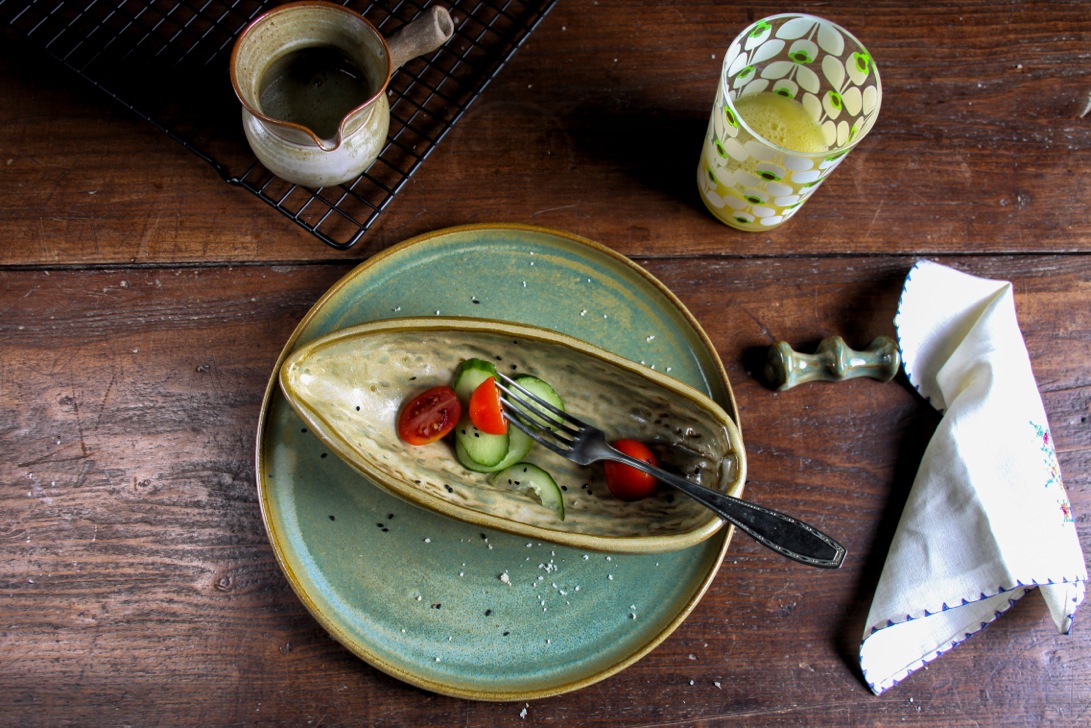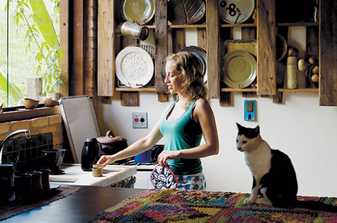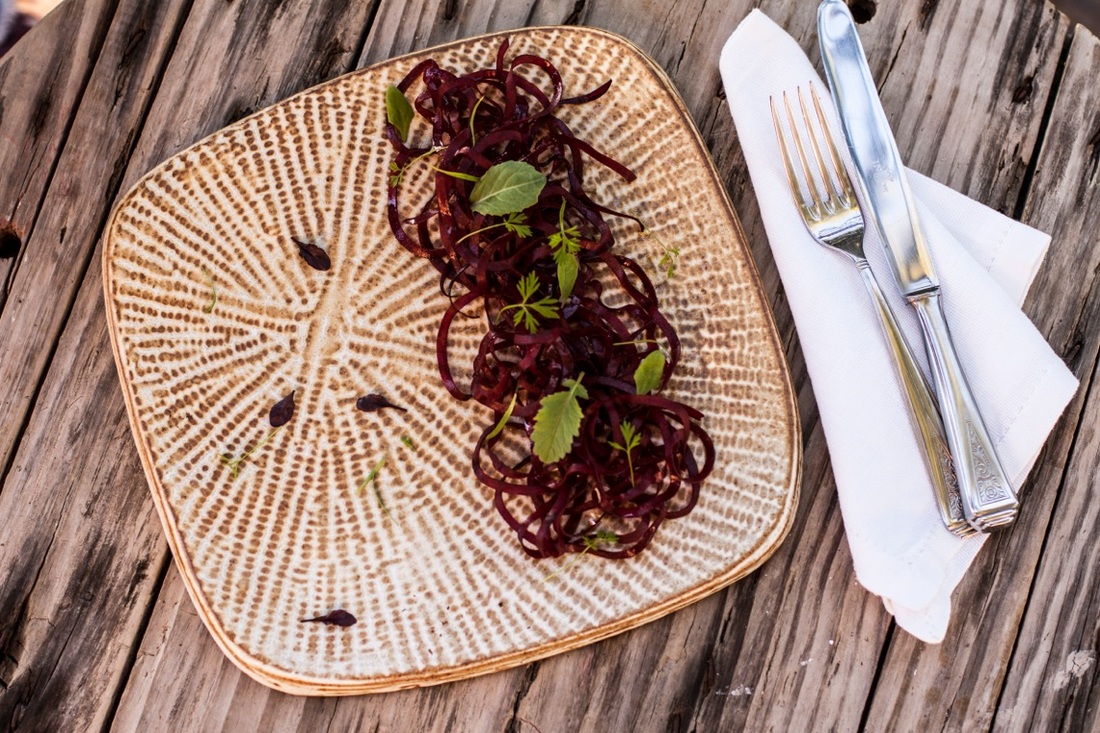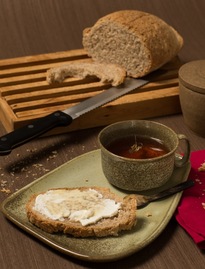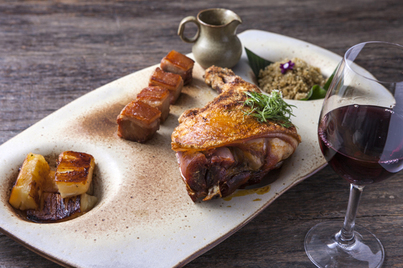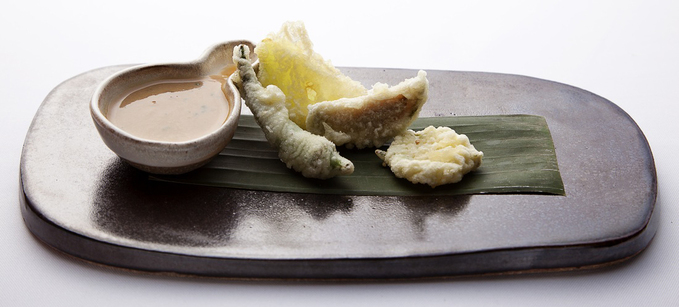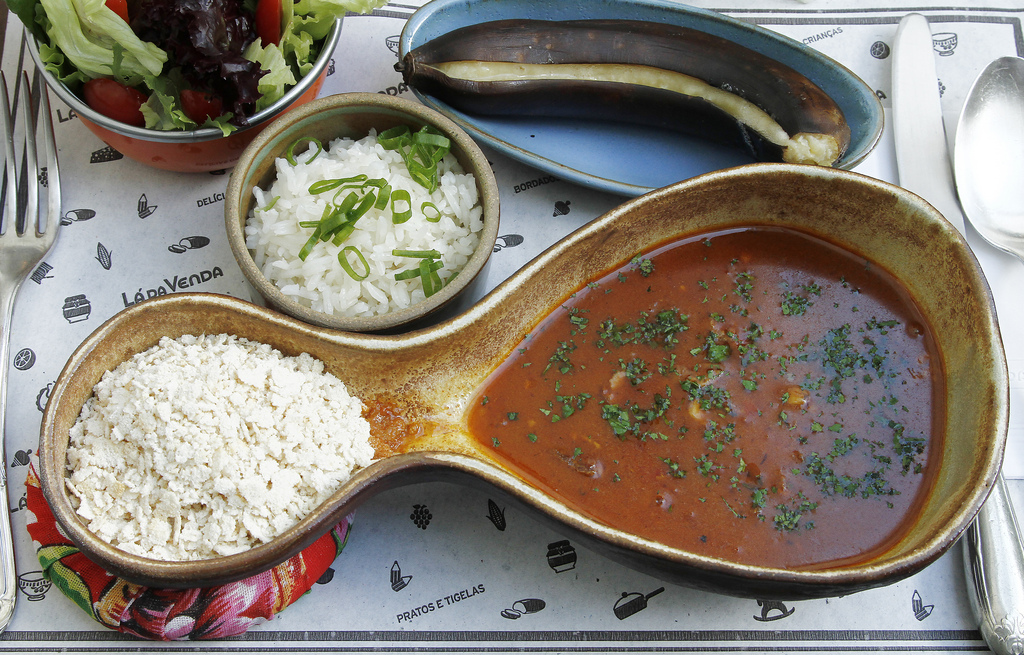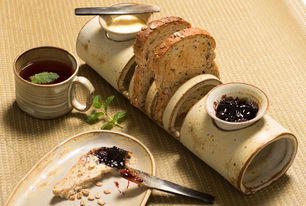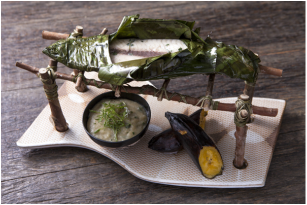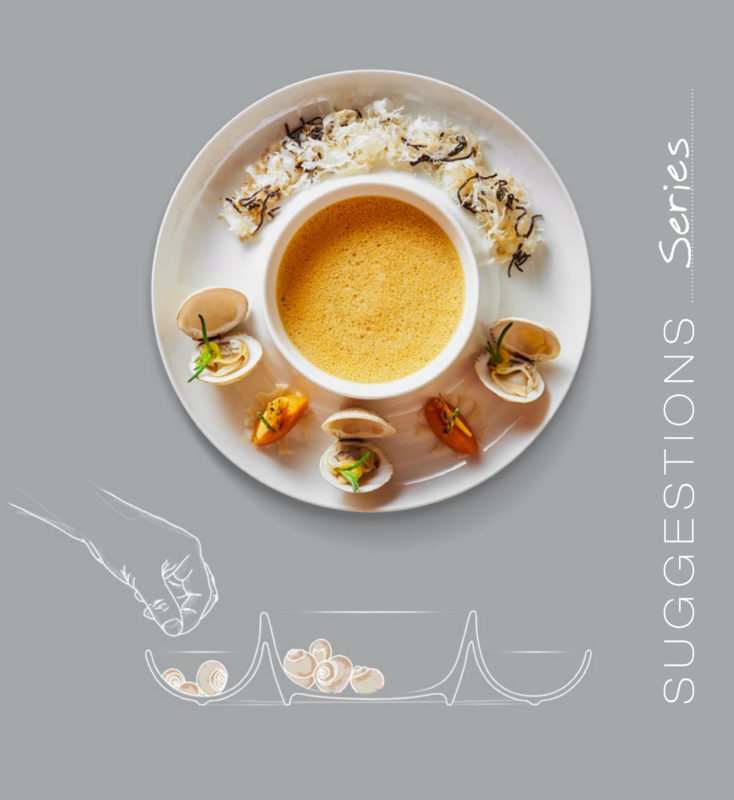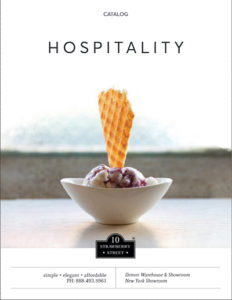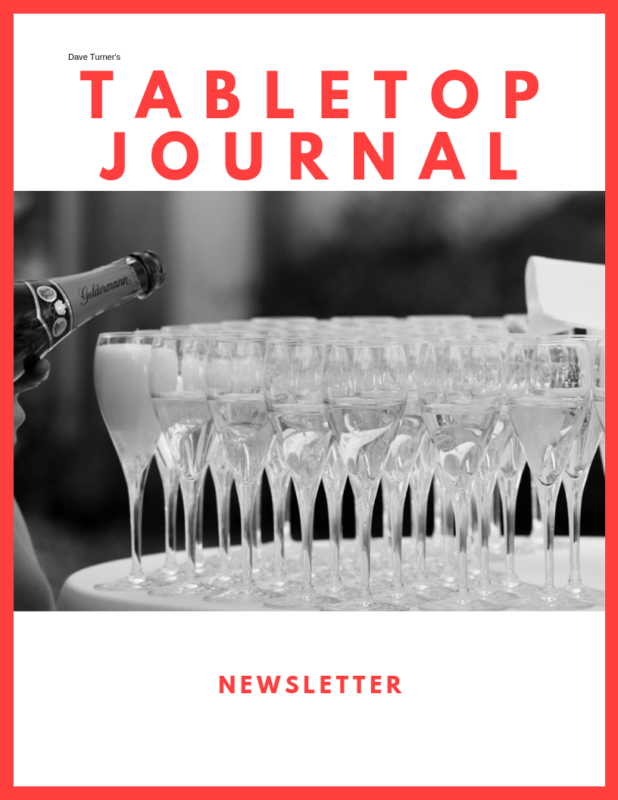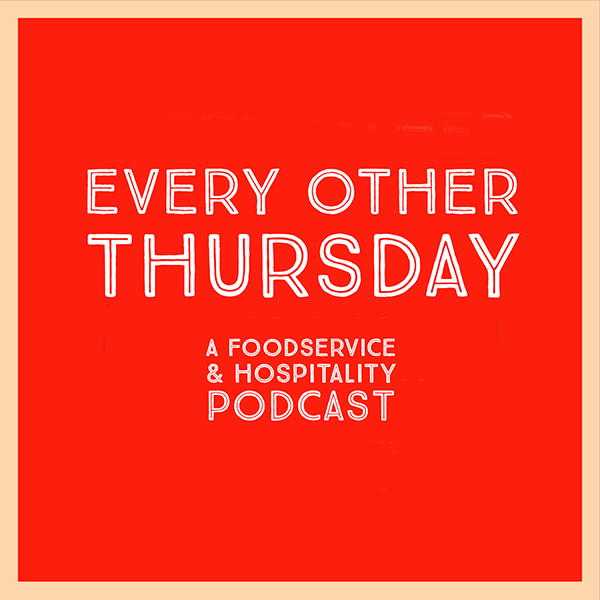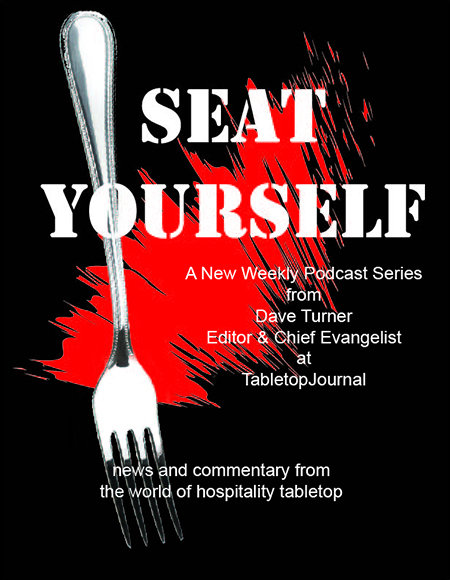To label Gisele Gandolfi simply as a Brazilian Ceramicist may be one of the biggest understatements of the year. Gisele and her company Muriqui Ceramica are paving the way for ceramic trends in Brazil. Gisele Gandolfi’s ability to pull inspiration from every corner of her life makes her well suited to lead in an industry that’s chomping at the bits to bring diners a more refined dining experience.
With Gisele’s work being in some of Brazil’s top tier restaurants, such as Epice Restuarante, yet having so little written about her, TabletopJournal felt compelled to ask a few questions to find out more about who the potter in the Muriqui Atelier was.
Q: We are always interested in what leads a creative person up to a career in ceramics. Before ceramics, were you involved in other creative areas? How did you get started in ceramics and the tabletop industry?
A: My dad has his degree in Chemistry and my mom in Geology; I think that’s how ceramics got into my life. I remember my dad doing a lot of experiments, formulating and testing, changing isolated items and exposing them to the sunlight and to the rain to see what could happen. My mom was always around with stones and soil samples.
Q: Since TabletopJournal is focused on the hospitality industry, can you tell us a few of the restaurants and hotels where your works are currently used?
A: Once Brasil a Gosto opened, we started getting a demand from other restaurants. Some were focused on working with Brazilian ingredients and others weren’t. The possibility of doing something on demand, and specific to the table of a chef that has his own ideas about how to serve, was still something unexplored in Brasil. Some of our hospitality customers right now are Attimo, Epice, Clandestino, Rodeio, Banana da Terra , Mercearia do Mediterraneo, Mistral Wine Bar, C at Hyatt, and Arola Vintetres from Sergi Arola international restaurant at Tivoli.
Q: When creating your pieces, where do you draw your inspiration? Do you start with a specific purpose in mind for a new piece?
A: Inspiration comes from my life, the people I talk to— their spirit and humor. I get it from the way people do every days tasks, how they hold and handle things. From organic shapes, seeds, fruits that I find in the country, on the beach, at the grocery market. Very often I have a specific briefing on what to make. The subject just floats in my head and I start modeling the clay when I get the picture in my head of how it would be. If I am not at the studio, I’ll draw a little. Sometimes I cut and paste craft paper to get the idea of the volume and composition, but it’s really just to hold the picture of the object in my head until I model the clay prototype.
Q: How do you distinguish your work from others, while still keeping it tasteful and in line with the traditional tabletop experience? Are you even concerned with the traditional tabletop experience?
A: Our loyal customers say they can distinguish our work anywhere they go. Our process is 100% manual, we start from clay, we prepare (and formulate) our glazes and engobes then we fire stoneware. From my point of view it’s a very Asian way of doing ceramics but the shapes, the concept, the glazes and the combination of all that translates into durable utensils with a Brazilian DNA. My tabletop experience comes from my family habits, from my travels abroad especially to Europe. The designs I absorbed in Italy, England, Spain— plus a traditional cultural experience of eating as a Brazilian, decedents from Indians, Africans, Portuguese, and Libyan. The Atelier Muriqui has got this spirit of keeping it experimental and welcome to the contemporary needs of expression at the table. I feel it in the edge.
Q: Describe the process that goes into creating your work. From the initial idea, to the final product being used on a tabletop. How long does this process take on a production scale required for a hospitality customer?
A: Sometimes I have to show 4 different prototypes to a customer, but it depends a lot in how clean the restaurant concept is. If I can read the chef and the staff right, if the briefing is consistent I can narrow it down to one prototype to show. We may have some adjustments; usually we work from a dozen to a hundred pieces. That takes about 30 to 40 days to have them produced.
Q: How does your process for creating something like commissioned tabletop products differ from your process in creating personal use – home use – work?
Home use pops up for me, I get stimulated by an organic shape I hear necessities from a friend, from a client… usually there is no deadline…
Having been commissioned means to be creative under pressure. Most of the time the chefs and investors have high expectations. The chef is usually a very creative person willing to be a co-creator. The pieces have to work from the stacking on the kitchen selves, through the cooks and waiters’ hands, and then play the role beautifully on the table. Color, thickness, timing… everything matters.
Q: What are some do’s and don’ts you wish clients were more cognizant of? Do clients always know what they are looking for or do they expect you to bring them pieces that even they didn’t realize they needed?
A: Right now in Brazil, ceramics on the table is a trend. I really would like to take advantage of this moment to let clients see the ceramics world in a vertical, deeper, and poetic perspective. There are so many differences in the process of making earth wear ceramics or stone wear, kiln them with electric or gas or wood, developing our own recipes or buying established glazes from international companies. All these choices are reflected in at the final piece and a sophisticated client can feel it. The more they know about craft art or about the discipline it takes to make a piece of clay turn into fine ceramics, the better. Listening to their needs and to talk about them is a very important part of making ideas come true. We may talk while traveling together or meet in the showroom, I might eat at their restaurant sometimes, and often we have chat on Whatsapp (which has a been an indispensable tool!)
They surely do know what they are looking for when they see it. I can see it in their pupils!
Q: What role do you feel your products play in the dining experience for the guests of the restaurants and hotels who use your products?
A: They serve. They work at the table. They compose the atmosphere proposed by my clients to their guests. Their composition surprises the guests.
Q: You’re part of a new generation that’s ushering in big changes to the tabletop industry, as we know it. Does it feel like that to you or are the styles of products you produce just what you love to do?
A: I feel people demand what I do but at the same time I love what I am doing. The way I eat and I do my ceramics is just how I think. How I about think life and feel connected to the world.
Q: What’s the next level for you? Both in hospitality tabletop products and personal work, where do you take your creativity next? What should the hospitality world expect next from Gisele Gandolfi?
A: I never know, but I am always asking, “What is next?” and “why not?” I want to have time to go where my interests drive me. It can be exploring a conversation with someone, a book, an environment, a new material, or a new technique.
Q: What advice would you give to young ceramicists and artists in general looking to break into the hospitality tabletop industry?
A: No fear, go for it! Be aware that you are going to work long hours, daily, at the process of doing ceramics; the timing may not be your desirable timing. The work is never ending.
Q: Lastly, what’s the best meal you’ve ever eaten from one of your works?
The best so far has been the Clandestino by Chef Bel Coelho at Menu Confiance. All served on the Muriqui pieces. Now, weekly, I choose a big ceramics bowl, each time a different one, and pick up the harvest from my country house: litchi, oranges, plums, zucchini, and cabbages. Although I might impulsively take a bite of one of them because just looking at them makes me feel satisfied!
As she has stated, there is no clear path as to where or what Gisele Gandolfi’s next moves are. However, we’re positive that she’s definitely in a position where no matter what she does, she’ll continue to be a tabletop trendsetter in the Brazilian hospitality industry.
-Hamid Ali

